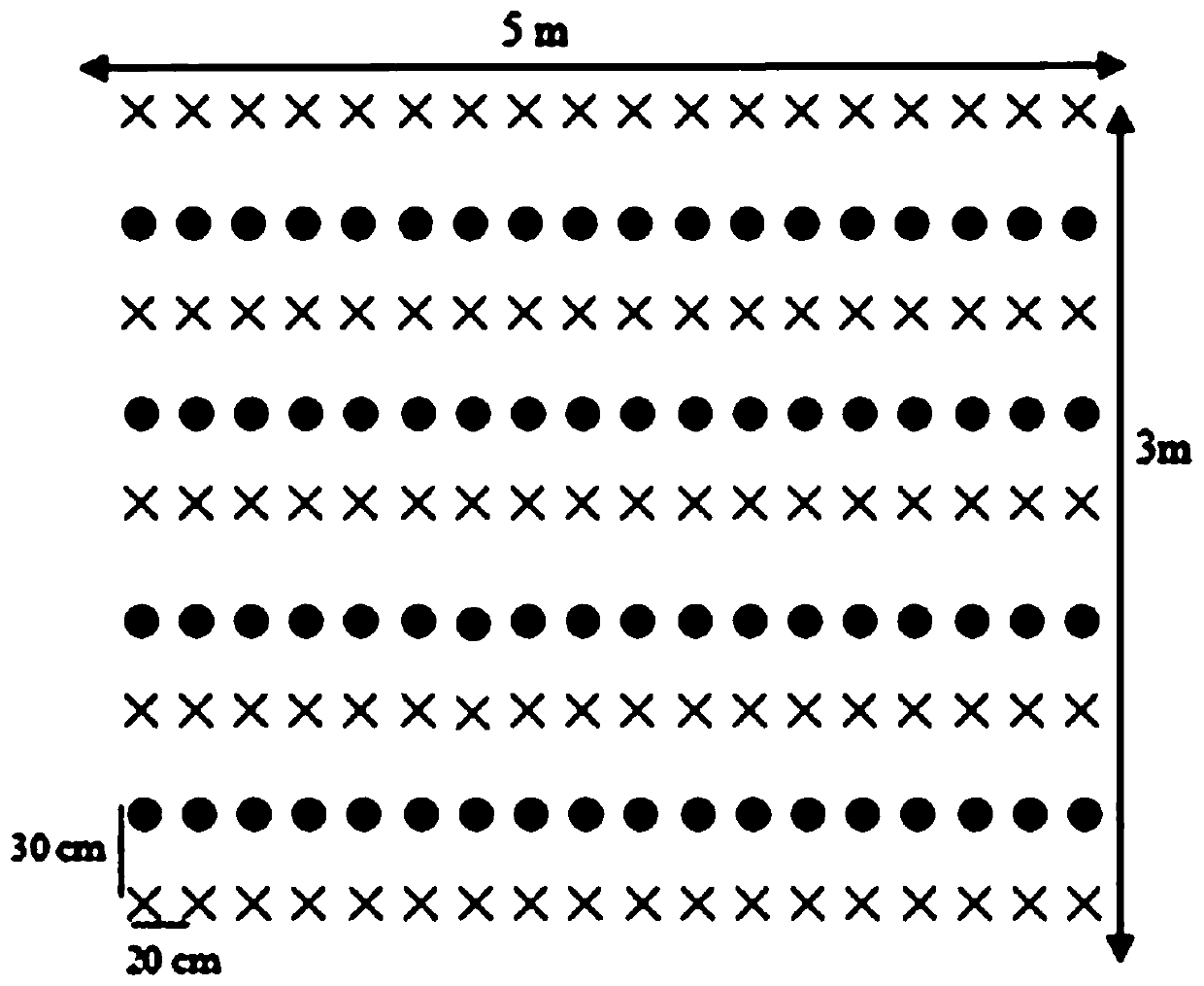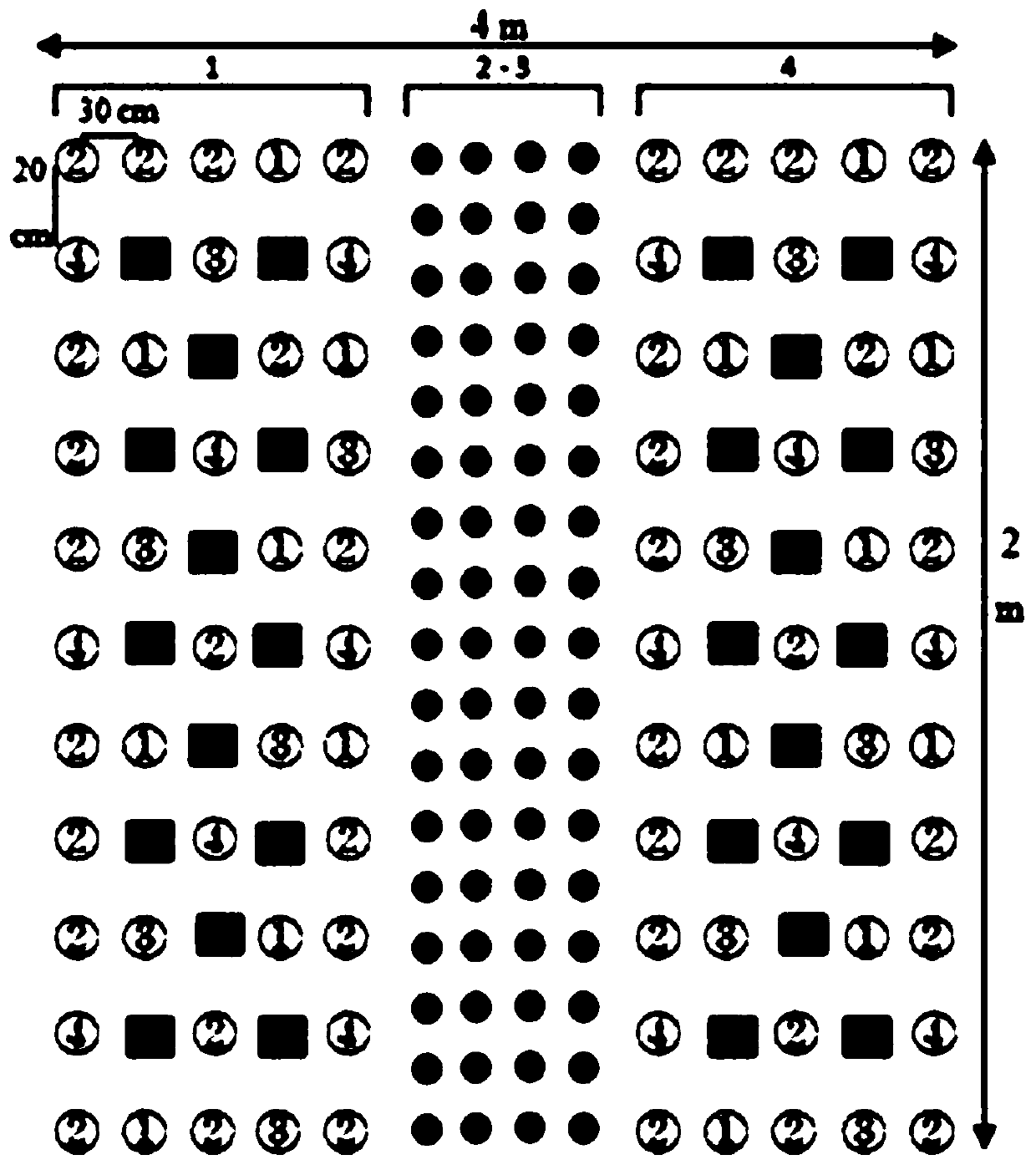Method for assessing weedization gene flow risk of transgenic rice and application thereof
A technology of transgenic rice and gene drift, applied in the direction of biochemical equipment and methods, applications, rice cultivation, etc., to achieve the effects of ensuring accuracy, saving detection time and economic costs, and evaluating scientifically and accurately
- Summary
- Abstract
- Description
- Claims
- Application Information
AI Technical Summary
Problems solved by technology
Method used
Image
Examples
Embodiment 1
[0081] A kind of detection method of weedy rice to transgenic rice gene drift rate (reverse gene drift rate), comprises the following steps:
[0082] (1) Random sampling method was adopted to extract 20000 seeds from the harvested transgenic rice seeds.
[0083] (2) Randomly sample 60 grains among the 20,000 grain samples taken, and perform dehulling and grinding, and pass through a 60-mesh sieve;
[0084] Take 0.5mL sample (0.342~0.377g) for DNA extraction;
[0085] The extracted DNA with a concentration of 39.8-77.7 μg / mL is detected for the Rc gene, and whether there are 104bp and 118bp amplified fragments in the sample is used to determine whether there are hybrids formed by the drift from weedy rice to transgenic rice; if there is 104bp and 118bp amplified fragments, then there is a rice seed gene drift in this group of rice;
[0086] The Rc gene amplification primer sequence is:
[0087] Upstream primer: 5′-TTACAGGGGAGCAGAAACA-3′;
[0088] Downstream primer: 5'-TCTTT...
Embodiment 2
[0097] Example 2 Simulating the spatial distribution pattern of the hybrids formed after the transgenic rice resistance gene drift and the hybrids formed after the pollen of weedy rice drifted into the transgenic rice in the transgenic rice progeny seeds
[0098] Conventional rice was used as the experimental material, and rice of the same size was selected to be dyed with red ink to replace transgenic rice. According to the mixing ratio (weight ratio) of dyed rice and non-dyed rice 2.5%, 1.25%, 0.8%, 0.625%, 0.5%, 0.4%, 0.3%, 0.2%, 0.1%, 0.05%, 0.025%, the total amount is 10kg, Simulate the factors that may lead to the mixing of the two kinds of rice during harvesting, transportation and storage. After the mixed rice was turned over 30 times, samples were taken. The sample size accounted for 20% of the total, that is, 2kg. Spread the sampled rice flat, every 10cm×10cm area, a total of 50 grids, count the number of dyed rice in this area. Four replicates were set for each gen...
Embodiment 3
[0103] Example 3 Determination of the Optimum Sampling Quantity for Transgenic Rice Gene Drift Rate Detection
[0104] After mixing dyed rice and non-dyed rice according to the proportion (weight ratio) of 0.025%, 0.05%, 0.1%, 0.2%, 0.3%, 0.4%, 0.5%, the simulated process of harvesting, transportation and storage may result in two kinds of rice Mixing factors, turn the mixed rice 30 times, according to the measured thousand-grain weight of the rice seeds (26.1123+0.0820g), randomly weigh 5000 grains, 10000 grains, 20000 grains, 30000 grains, 40000 grains from a total of 10kg of rice grains, 50000 seeds with a weight of 50000 grains, and the number of dyed rice was counted, repeated 16 times, and then the deviation coefficient between the simulated drift rate of dyed rice and non-dyed rice and the drift rate obtained by sampling was less than 0.05 as the standard, and determined under different mixing ratios. the optimal sampling size. Under different mixing ratios of dyed ric...
PUM
 Login to View More
Login to View More Abstract
Description
Claims
Application Information
 Login to View More
Login to View More - R&D
- Intellectual Property
- Life Sciences
- Materials
- Tech Scout
- Unparalleled Data Quality
- Higher Quality Content
- 60% Fewer Hallucinations
Browse by: Latest US Patents, China's latest patents, Technical Efficacy Thesaurus, Application Domain, Technology Topic, Popular Technical Reports.
© 2025 PatSnap. All rights reserved.Legal|Privacy policy|Modern Slavery Act Transparency Statement|Sitemap|About US| Contact US: help@patsnap.com



